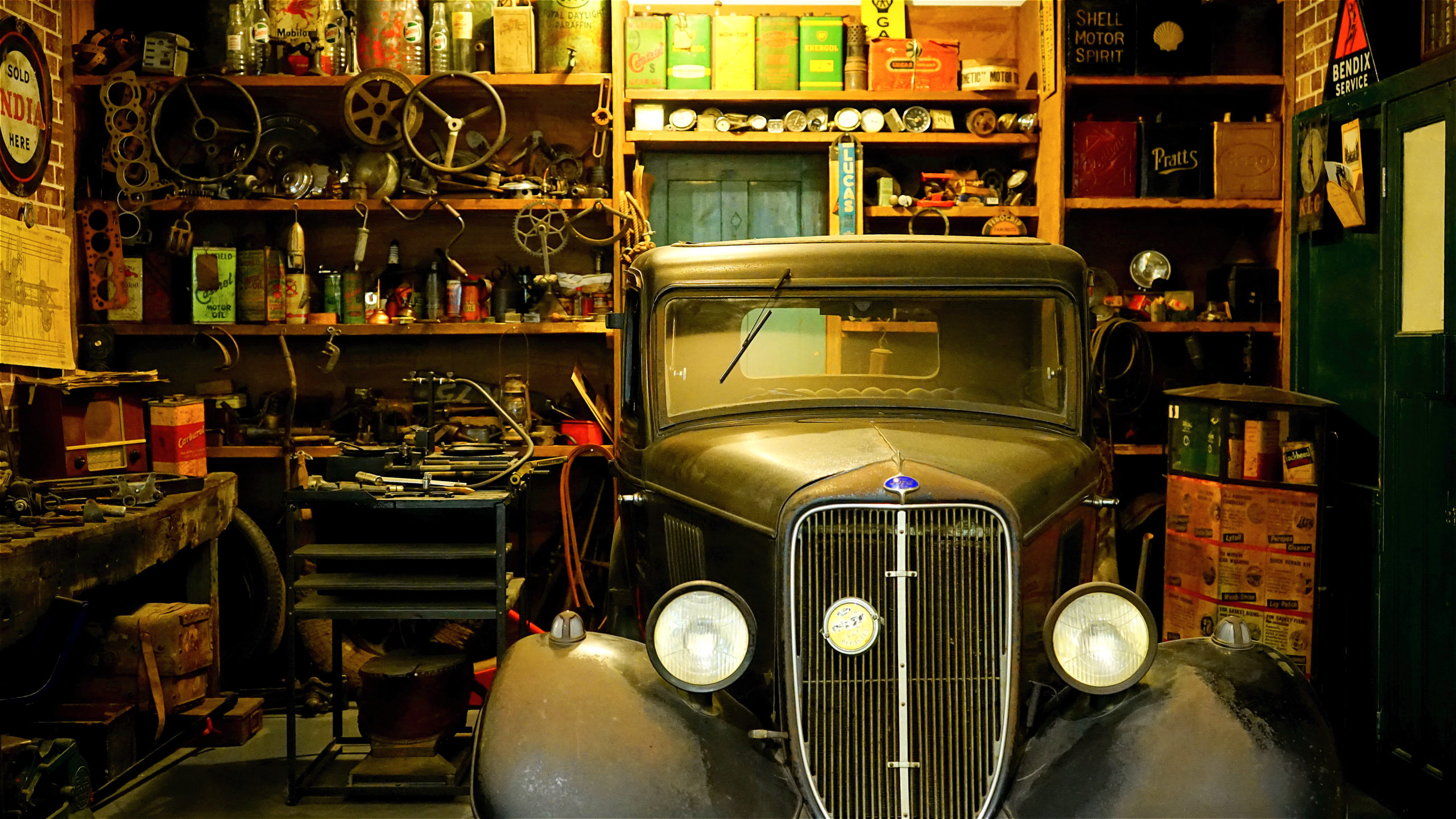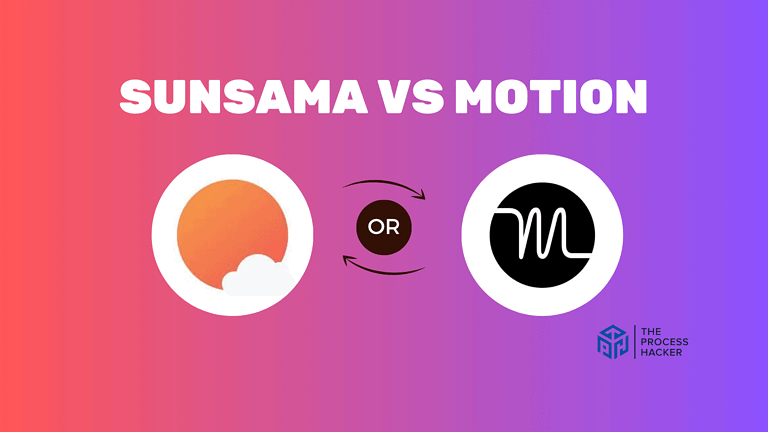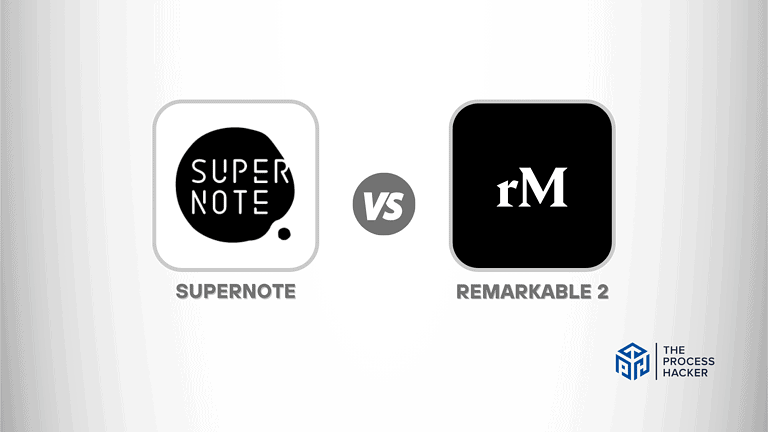5S of Workplace Organization
“Clutter is caused by a failure to return things to where they belong. Therefore, storage should reduce the effort needed to put things away, not the effort needed to get them out.”
Marie Kondo is a well-known tidying expert from Japan who wrote the book, The Life-Changing Magic of Tidying Up.
It may seem that we have a lot of control when it comes to getting our work done; however, our workspace plays a significant role in the tasks that we want to complete.
Like the photo shown above, I grew up with a messy garage with things everywhere – power tools laid on top of each other, the nail/screw drawers were a mash-up of various sizes, and the gardening hose always had to be untangled. Sometimes, I would back the car out of the garage to hopefully find the things I was looking for.
The clutter was frustrating at times. Over the years, I spent a lot of time dealing with my garage, causing me much-lost productivity.
Thus, your environment has a significant impact on your behavior and the work you want to get done. You respond and take action based on how you organize your workspace around you. You can redesign your work area to set yourself up to be productive using a Japanese organizational system known as ‘5S’.
What is the 5S Methodology?
‘5S’ is a system that allows you to organize your workspace to be tidy, organized, and visual.
Going through the five’ S’ phases will make you more organized and reduce waste, putting all tools and materials back in their appropriate places. The methodology establishes standard working conditions and systems while eliminating waste and safety hazards.
Toyota Production System
The 5S workspace organization system, developed initially as part of the Toyota Production System, is a methodology designed to enhance manufacturing industry efficiency by organizing the workspace and simplifying work processes. Named “5S” after its origins in post-World War II Japan, this approach was a key element in Toyota’s adoption of lean manufacturing practices to improve production methods at the Toyota Motor Company.
Today, 5S has evolved into a globally recognized strategy for workplace organization, not only in the manufacturing sector but across various industries. Its effectiveness in creating a positive work environment and improving workplace efficiency is well-documented. By reducing excess inventory, using floor marking tape for better spatial organization, and employing visual management tools, 5S helps manage hazardous material more safely and enhances patient safety in healthcare settings.
The widespread adoption of the 5S system can largely be attributed to its proven ability to improve productivity. It fosters a culture of continuous improvement, making it integral for organizations aiming to sustain high performance and safety standards.
5S Terms and Translations
The 5S system of workspace organization comes from five Japanese words that start with the letter ‘S’: Sort, Set in Order, Shine, Standardize, and Sustain. The 5S system is derived from lean principles. The table below translates the Japanese terms into English with a respective definition:
| Japanese | English | Definition |
| Seiri | Sort | Remove all items that are not needed by separating needed tools, parts, and instructions from unneeded stuff. |
| Seiton | Set in Order | Organize needed items by arranging and labeling materials and tools for ease of use. |
| Seiso | Shine | Clean the workspace. |
| Seiketsu | Standardize | Document procedures to maintain workplace organization for the first three S’s |
| Shitsuke | Sustain | Make a habit of maintaining the 5S organization by following established procedures. |
Example: Disorganized Garage Workshop
Disorder and filth in a workspace can lead to inefficiencies such as lost time searching for items, errors from using incorrect tools, or increased accidents from hazardous materials and physical hazards. Conversely, a clean, orderly, organized workspace promotes focus and motivation, enhancing productivity. Maintaining a workplace clean and organized is crucial for reducing waste and optimizing the use of valuable space.
The image above depicts a chaotic garage workshop bench cluttered with tools and materials. Such an environment is not only unappealing but can also hinder production processes. Implementing visual controls and shadow boards can help organize remaining items and clean tools, making them easily accessible. These setups are particularly beneficial in environments with repetitive tasks, where efficiency is paramount.
Key benefits of an organized workspace include better resource management and a safer working environment. Whether it’s a physical location or a digital workspace, employing these principles ensures that every tool and resource is optimally placed, fostering an atmosphere where productivity thrives.
Throughout this post, we will reference the garage as an example of a workspace that we can organize and tidy up using the 5S methodology.
#1) Sort: Remove All Unnecessary Items
Sorting is the process of removing unnecessary items by separating needed tools, parts, and instructions from unnecessary stuff.
First, we remove all the things in our workspace that we do not need. Yes, we will get rid of items that we will never need. However, we will also separate things that are required versus those that we use infrequently or have “just in case.”
In your home, this could involve sorting out the unworn clothes in your closet, the broken electronics in the attic, or the tools collecting dust in the garage. Sorting has advantages: it uncongested the workspace, saves time searching for things, and frees the workplace from unnecessary items and storage space.
A 2011 study by the Princeton University Neuroscience Institute found that clutter makes it difficult for people to focus their attention on a given task. Unnecessary objects in one’s field of vision overwhelm the visual cortex, making it difficult for that person to focus on a particular task and be productive.
Steps:
- Identify the purpose of the workspace.
- Divide work items into two categories: necessary (use) or unnecessary (not used).
- Subdivide work further items based on their purpose and time usage (frequently, occasionally, or rarely).
- Remove unnecessary items by trashing, repurposing, or donating.
Garage Workshop Example:
- I establish the purpose of my garage. It will be a place to store my car and the materials or tools that will help me work on my home and yard.
- With the purpose (Step 1) in mind, I start sifting through the clutter. I find that I am storing many unnecessary items, such as old boxes, broken electronics, and random junk.
- With the tools and materials I use left, I begin separating them by how they function and how often I use each tool.
- I remove, donate, or trash all of the items from Step 2 that do not align with the established purpose of the workspace.
#2) Set in Order: Organize Your Stuff to Be Easily Found
Setting in Order or Straightening organizes needed items by arranging and labeling materials and tools for ease of use.
Next, we arrange the items from the Sort phase for each use. We examine each item’s purpose and label it if necessary. Labeling is recommended for workplaces with many users to help everyone find, use, and return the items to their storage location.
In an office, a central cabinet can be implemented to organize office supplies. Proper bins and labels can help all employees retrieve the appropriate supplies to complete their work.
The benefits of setting in order are that it helps everyone find the right items, reduces time searching for things, and provides the appropriate space and location for each object.
Steps:
- Decide on a location for necessary items based on purpose and frequency of use.
- Obtain the appropriate storage containers and shelves to house the necessary items.
- Implement a visual workplace by labeling storage areas and locations.
Garage Workshop Example:
- With the newly created space for removing unnecessary items from the Sort phase, I have a lot of room to work with to organize my necessary tools and materials. Then, I sketch out a rough layout of how I want to manage the space with the tools and materials based on their purpose and frequency of use.
- I get a pegboard (shown in the image above) to store the tools I often use on an easily accessible wall. I get shelving for my power tools and storage bins with drawers for the nails and screws.
- For my pegboard (shown in the image above), I visually lay my wrenches by the specific type of wrench and in order of size/length so it will be easy to find the wrench I need. I organize my nail and screw storage bin by type and size and label the outside of each drawer, again for ease of use.
#3) Shine: Clean Your Workspace
Shining or sanitizing is used to clean the workspace.
The third phase can be easy to disregard, especially when we get busy. Shining involves cleaning the workspace by vacuuming carpets, wiping surfaces, dusting, sweeping, and mopping floors.
This phase also includes putting away and maintaining materials and machinery to maximize operational time and prevent stoppages. Shining should be done regularly to keep the work space organized and clean and the equipment in working order.
Cleaning your work environment with proper cleaning tools has advantages: problems are easier to detect, clean supplies are more durable and reliable, and it’s better for your motivation and health.
Professor Nicole Keith, Ph.D., of Indiana University, published a study finding that people with clean homes are healthier and more active than those with messy homes. The study followed the physical health of 998 elderly Americans and found that the cleanliness of their homes was closely correlated with their physical health, even more so than a factor like neighborhood walkability.
Steps:
- Conduct an initial or period deep clean.
- Determine the items that require regular cleaning and the type of cleaning required.
- Figure out how regularly the cleaning needs to occur.
Garage Workshop Example:
- As I have just organized from the last two phases, I will deep clean the garage to give extra attention to areas that are uncovered by clutter and often neglected. I will spend a full day removing dirt build-up, wiping every surface, and cleaning all tools.
- I determined that the power tools and workbench need to be wiped down, and the garage floor needs to be swept and mopped.
- I determine that the power tools and workbench need to be wiped down after each use. Every other Sunday morning, I sweep and mop the floor.
#4) Standardize: Document Your Procedures for Previous Steps
Standardizing is to document procedures and tasks to maintain workplace organization for the first three S’s. The fourth phase allows us to establish procedures to continually carry out steps for maintaining the work environment to keep it organized, clean, and in working order.
The U.S. Army defines a Standard Operating Procedure, or SOP, as “a clearly written set of instructions for methods detailing the procedures for carrying out a routine or recurring task or study.” SOPs are commonly used in the military and industry to help workers conduct activities consistently and efficiently.
The benefits of standardizing are that it will allow you to maintain an organized, working, and clean work environment using established procedures. It will be easier to train others to use the organized workspace.
Steps:
- Establish the procedures needed for the Sort, Set in Order, and Shine phases.
- Define each procedure in as much detail as required to execute the steps:
- What needs to be done?
- What materials or tools are required to do the work?
- Who will do it?
- Where is the work required?
- Implement the procedures such that the workspace space is up to those standards.
- Make the procedures visible or easily accessible.
Garage Workshop Example:
- I write down high-level procedures for cleaning and gather any equipment manuals I can find for maintenance instructions.
- On my computer, I create checklists for the cleaning required with details. Also, I download or scan the equipment manuals onto my laptop.
- The garage workshop cleanliness is up to my standards since I conducted a deep clean in the previous phase. Also, I use the manuals to fix and maintain all my tools so they are in working order.
- Lastly, I organize a folder with my cleaning procedures and manuals in my cloud account to easily retrieve them.
#5) Sustain: Maintain Your Visual Workspace
Sustaining is to make a habit of maintaining the 5S organization by following established procedures.
This final phase allows us to create the habits to maintain an organized workspace using the procedures in the Standardize phase. We will look for ways to continually improve our work environment and update the procedures accordingly. Over time, we will get more work done and improve efficiency.
Steps:
- Assign roles and responsibilities for conditions set by the established procedures.
- Maintain and monitor conditions.
Garage Workshop Example:
- One of my closest friends asked me if she could get access to my workshop, so I agreed as long as she helped with cleaning and maintenance. I gave her access to the procedure files on my cloud account, and we split up responsibilities.
- Over time, the garage workshop stays clean and operational, making it an enjoyable place to work!
Note: Strive for Continuous Improvement
Embracing the 5S methodology is not a one-time effort but a continuous journey toward operational excellence. Each phase of the 5S process offers a unique contribution to this journey. Sorting eliminates unnecessary items, setting in order organizes what remains, shining focuses on cleanliness, standardizing introduces consistent practices, and sustaining ensures these practices are followed long term.
This continuous improvement is crucial because it instills a proactive culture of maintenance and regular updates. This ongoing commitment helps you maintain high standards and adapt to changing demands without losing momentum or productivity.
By integrating these principles, you create a resilient framework that supports sustained efficiency and a proactive work culture. This approach not only optimizes your physical workspace but also enhances the overall workflow and output quality, positioning you for success in any high-stakes environment.
Final Thoughts on 5S Workspace Organization

And that brings us to the end of our discussion on the 5S of workplace organization. We’ve explored each S in detail – Sort, Set in Order, Shine, Standardize, and Sustain.
Hopefully, you now understand how these principles can transform your workspace into an efficient and streamlined environment. But let’s be real, organizing your workplace is not a one-time process. Maintaining the order you worked so hard to establish requires continuous effort and dedication.
So remember to regularly review and reassess your systems to ensure they are still effective and relevant. And, a cluttered workspace leads to a cluttered mind, so don’t let laziness or excuses get in the way of creating an organized space.
While implementing the 5S may seem daunting at first, just think about how much time and energy you’ll save in the long run. Plus, who doesn’t want their boss or coworkers to compliment them on their well-maintained and tidy workspace?
Embrace the 5S, make it a part of your daily routine, and watch your productivity levels soar. Thank you for joining me on this journey to workplace organization—now it’s time for you to conquer that mess!







